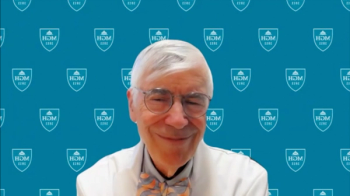
Prevalence of Hemophilia Worldwide Is Triple That of Previous Estimates, New Study Says
The meta-analysis showed that more than 1,125,000 men around the world have the inherited bleeding disorder; 418,000 of those have a severe version of the mostly undiagnosed disease. Previously, only 400,000 people globally were estimated to have hemophilia.
The global population of patients with hemophilia is 3 times larger than originally believed, according to a study to be published in the Annals of Internal Medicine Tuesday.
A team of international researchers, led by McMaster University, used patient registry data from Australia, Canada, France, Italy, New Zealand, and the United Kingdom—the countries with the most comprehensive registries of hemophilia.1 Hemophilia A is caused by a defect in the F8 gene, and hemophilia B is caused by a defect in the F9 gene; both types affect mostly men.
The meta-analysis showed that more than 1,125,000 men around the world have the inherited bleeding disorder; 418,000 of those have a severe version of the mostly undiagnosed disease. Previously, only 400,000 people globally were estimated to have the disorder.
The study also calculated, for the first time, the prevalence of hemophilia among infants at birth. The researchers calculated that the life expectancy of those with hemophilia is significantly less than other people, particularly in lower-income countries where there is lack of treatment. Lack of treatment leads to chronic and disabling joint disease, while bleeding into organs and brain hemorrhages can lead to disability and death. Standard treatment for hemophilia is clotting factor replacement therapy, but in countries with limited health resources, it may be unavailable. Severe hemophilia often results in a significant economic and psychological burden on patients, caregivers, and the healthcare system as a whole.
The study found that, per 100,000 males, there are:
- 17.1 cases for all severities of hemophilia A
- 6.0 cases for severe hemophilia A
- 3.8 cases for all severities of hemophilia B
- 1.1 cases for severe hemophilia B
Per 100,000 males, the prevalence at birth is:
- 24.6 cases for all severities of hemophilia A
- 9.5 cases for severe hemophilia A
- 5.0 cases for all severities of hemophilia B
- 1.5 cases for severe hemophilia B
For those born with hemophilia, the chances of living a life of normal duration and quality will be reduced by 64% in upper-middle income countries, 77% in middle income, and up to 93% in low income countries.
In an email to The American Journal of Managed Care® (AJMC®) lead author, Alfonso Iorio, MD, PhD, FRCPC, said he hoped the study’s findings “will renew interest and investment in hemophilia.”
“I hope that showing the need will commit more young hematologist[s] and researcher[s] to invest time and energies to close the gap,” added Iorio, a professor of health research methods, evidence, and impact at McMaster University and director of the Hamilton-Niagara hemophilia program at Hamilton Health Sciences.
“Also, I hope that this can be an example for other rare diseases. To me, one important lesson learned here is that it is worth spending time to create and maintain disease registries, as they allow you to answer question[s] no one else was able to answer before.”
For this prevalence study, Iorio and the team of researchers approached the statistical analysis in a different way, applying a statistical technique called steady state analysis to the hemophilia registry data. Steady state analysis is typically used in electronics, physics, and pharmacokinetics.
He said, “the innovation was thinking outside the box, and look at the data from a different perspective. Everyone was looking at how many patients registered every year, and that number, for a rare disease, is very unstable. We looked year after year for the last 15 years to group patients by their year of birth, which is 'insensitive' to when they got into the registry.”
In the study, the authors said it is “the first time that data from national registries have been analyzed by calculating the ratio of the cumulative number of males with hemophilia born to the cumulative number of males born in a specific period.”
Despite the higher estimate, hemophilia would still qualify as a rare disease in the United States and in the European Union, the authors said.
The study comes as drug and biotech companies are hoping to get
Iorio said gene therapy would be a “game changer” in developing countries, assuming it would be available in those places; he said he hopes a more precise understanding of the need for treatment “will be beneficial to gene therapy manufacturers… to come up with a more reasonable pricing for gene therapy.”
In an accompanying editorial, J. Michael Soucie, PhD, with the CDC’s National Center on Birth Defects and Developmental Disabilities at the CDC, said being able to estimate a country’s burden of disease “could be a valuable tool for patient advocacy organizations that work with governments and health ministries to advocate for health care investments that can pay huge dividends for persons with hemophilia throughout the world.”2
Beyond clotting infusions, treatment is limited. In November 2017, the first new drug in 20 years for hemophilia A, emicizumab (Hemlibra), was approved by the FDA as a once-weekly injection for adults and children who have developed inhibitors or resistance to other treatments. The drug is used to prevent or reduce the frequency of bleeding episodes.
The wholesale acquisition cost of emicizumab is approximately $482,000 for the first year of treatment and $448,000 for subsequent years; gene therapies thus far have been priced in the 7-figure range, but they do away with the need of other treatments over the course of a lifetime.
References
1. Iorio A, Stonebraker JS, Chmabost H, et al. Establishing the male prevalence and prevalence at birth of hemophilia: A meta-analytic approach using national registries. Ann Intern Med [published online September 9, 2019]. doi:10.7326/M19-1208.
2. Soucie JM. Global hemophilia care: Data for action. Ann Intern Med [published online September 9, 2019]. doi:10.7326/M19-2535.
Newsletter
Stay ahead of policy, cost, and value—subscribe to AJMC for expert insights at the intersection of clinical care and health economics.





























































